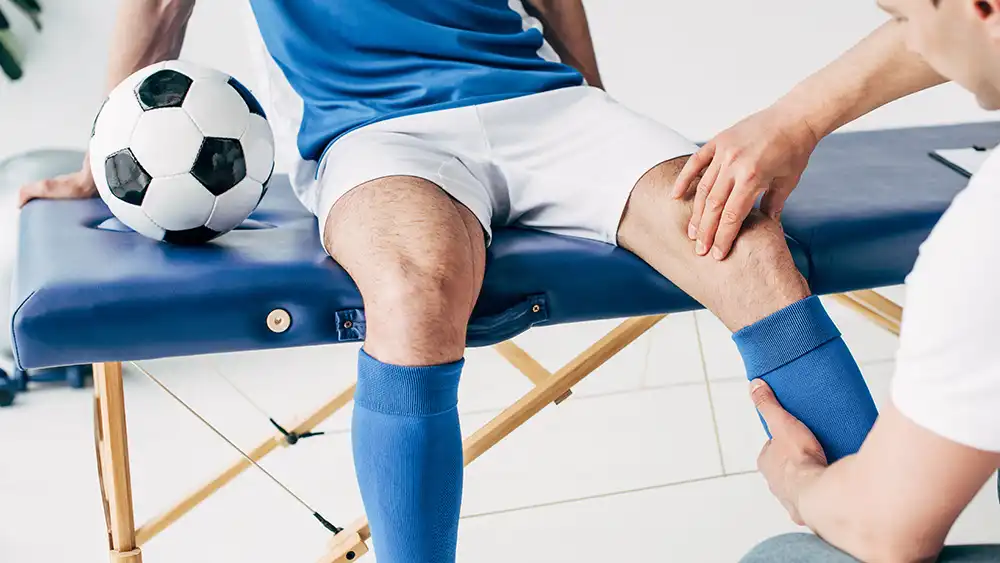Athletic injuries are an unfortunate reality for many sports enthusiasts, ranging from professional athletes to weekend warriors. Whether you’re training for a marathon, playing basketball, or just engaging in recreational activities, injury prevention is key to maintaining an active and healthy lifestyle. While some injuries are unavoidable, many can be prevented with proper techniques, warm-ups, and equipment.
In this blog, we’ll explore the top five most common athletic injuries and provide expert advice on how to prevent them so you can stay in the game and avoid long-term setbacks.
1. Sprains and Strains
What They Are: Sprains and strains are two of the most common athletic injuries. A sprain occurs when a ligament (the tissue connecting bones to each other) is stretched or torn, often due to sudden movements or excessive force. A strain, on the other hand, happens when a muscle or tendon (the tissue connecting muscles to bones) is stretched or torn.
Common Causes:
-
Overuse of muscles or tendons
-
Sudden twists, impacts, or falls
-
Improper technique or poor posture
How to Prevent Sprains and Strains:
-
Warm-up and cool-down: Always begin your workout with dynamic stretches or light cardio to prepare your muscles and ligaments for the physical activity ahead. After your workout, finish with static stretches to help your body recover.
-
Strength training: Regular strength training exercises for key muscle groups can help prevent strains by improving muscle endurance and flexibility.
-
Proper technique: Pay attention to your form during exercises and sports activities to avoid unnecessary strain on your muscles and ligaments.
2. Tendonitis
What It Is: Tendonitis is the inflammation of a tendon, often caused by repetitive motions or overuse. Commonly affected areas include the elbow (tennis elbow), shoulder (rotator cuff tendonitis), and knee (patellar tendonitis). Tendonitis is often accompanied by pain, swelling, and decreased mobility in the affected area.
Common Causes:
-
Repetitive motion or overuse of specific tendons
-
Lack of rest between workouts
-
Poor technique or improper equipment
How to Prevent Tendonitis:
-
Avoid overuse: Give your muscles and tendons time to recover by alternating between different types of exercises and taking rest days.
-
Warm-up and stretch: Perform warm-up stretches and focus on the areas that will be most engaged in your activity. Stretching helps maintain flexibility and prevents over-tightening of tendons.
-
Strengthening exercises: Perform strengthening exercises that target the muscles surrounding vulnerable tendons. This can help prevent excessive strain on the tendon and improve overall muscle balance.
3. Knee Injuries (ACL/MCL Tears)
What They Are: Knee injuries, especially those involving the anterior cruciate ligament (ACL) or medial collateral ligament (MCL), are common in sports like soccer, basketball, and football. These injuries occur when the ligaments that stabilize the knee joint are torn or stretched due to sudden movements, twists, or impact.
Common Causes:
-
Sudden stops, twists, or changes in direction (common in sports like soccer or basketball)
-
High-impact activities or falls
-
Muscle imbalances or weaknesses in the legs
How to Prevent Knee Injuries:
-
Strengthen the muscles around the knee: Focus on exercises that strengthen the quadriceps, hamstrings, and calf muscles. Strong muscles can help absorb shock and reduce the strain on your ligaments.
-
Proper technique: When jumping, landing, or changing directions, make sure to land with your knees slightly bent and your weight evenly distributed. Avoid locking your knees or landing stiff-legged.
-
Wear proper footwear: Choose shoes that provide adequate support and cushioning for the activity you’re doing to reduce the risk of knee injuries.
4. Ankle Sprains
What They Are: Ankle sprains occur when the ligaments in the ankle are stretched or torn, usually due to rolling or twisting the ankle during physical activity. This is a common injury in sports that require quick direction changes, like basketball, soccer, and running.
Common Causes:
-
Uneven surfaces or poor footwear
-
Sudden pivots, jumps, or lateral movements
-
Lack of ankle strength and flexibility
How to Prevent Ankle Sprains:
-
Strengthen your ankles: Performing exercises like calf raises and ankle circles can help strengthen the muscles around your ankle and improve stability.
-
Use ankle support: Wearing ankle braces or high-top shoes during sports that involve frequent lateral movements can provide added support and reduce the risk of spraining your ankle.
-
Pay attention to your surroundings: Be mindful of the playing surface or terrain, especially when running or jumping. Avoid uneven surfaces that increase the risk of twisting your ankle.
5. Shin Splints
What They Are: Shin splints refer to pain along the front of the lower leg, often caused by repetitive stress on the shinbone. This condition is common in runners, dancers, and athletes who perform high-impact activities.
Common Causes:
-
Overuse, especially in running or jumping activities
-
Sudden increases in activity or intensity
-
Poor footwear or running form
How to Prevent Shin Splints:
-
Gradually increase activity: Avoid sudden increases in your workout intensity or duration. Gradually ramp up your training to allow your muscles and bones to adapt.
-
Choose proper footwear: Make sure your shoes provide adequate support and cushioning for the type of exercise you’re doing. Replace shoes that show signs of wear and tear.
-
Cross-train: Mix up your workout routine to avoid overloading the same muscle groups. Swimming, cycling, and strength training can provide a break from high-impact activities like running.
Final Thoughts
While athletic injuries are an unfortunate part of playing sports, many of them can be prevented with the right approach to training, technique, and recovery. By incorporating proper warm-ups, strengthening exercises, and protective gear into your routine, you can reduce your risk of injury and continue to enjoy your favorite activities without interruption.
Remember, if you do sustain an injury, seek professional medical advice and treatment to ensure proper recovery. With the right precautions, you can stay active, injury-free, and perform at your best!

